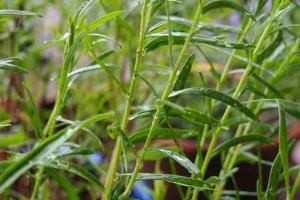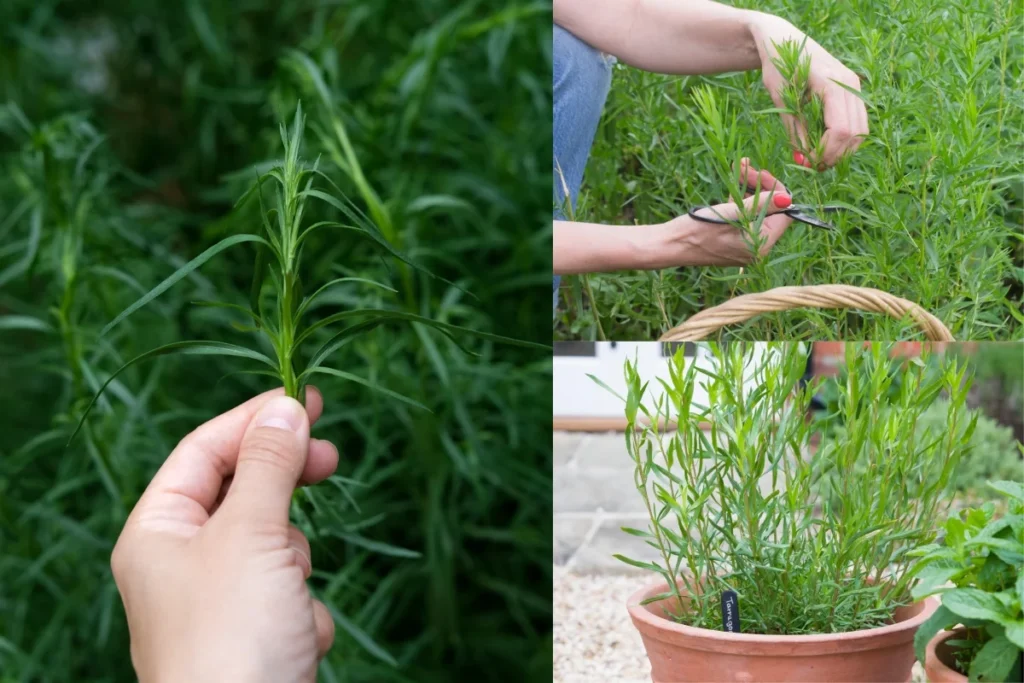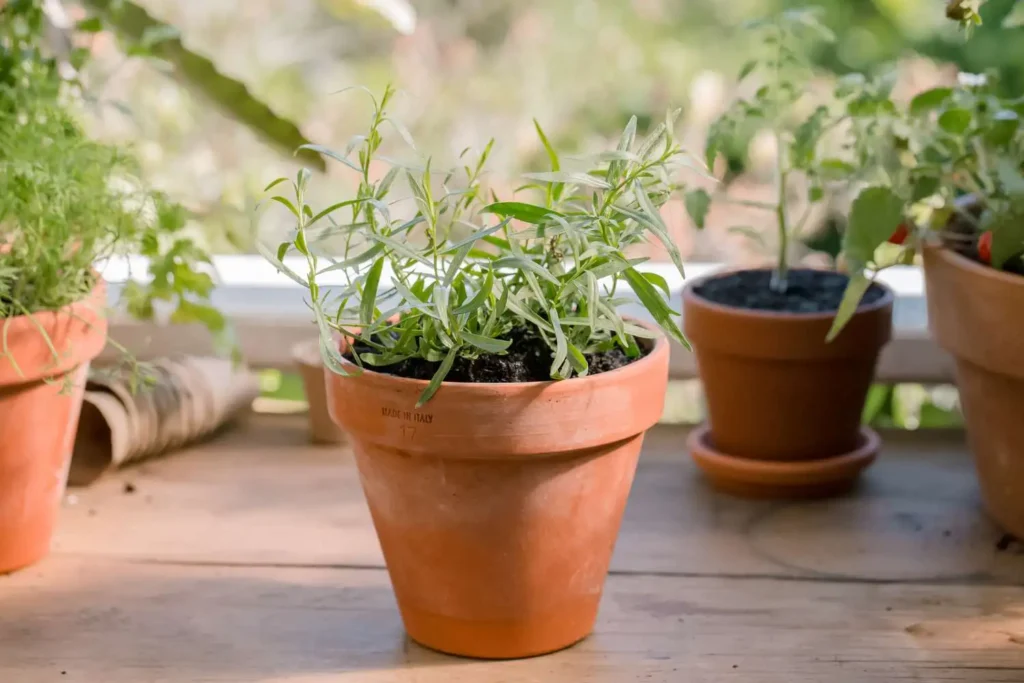Guides
How to Grow French Tarragon in Containers: A Complete Guide
If you’re an aspiring gardener or someone with limited space but still yearning to grow your own herbs, you’ve probably thought about growing French tarragon in containers. But the real question is: how do you get started with growing this aromatic herb, especially when you don’t have a backyard? Well, you’ve come to the right place! In this comprehensive guide, I’m going to walk you through everything you need to know about how to grow French tarragon in containers—whether it’s for your kitchen or your patio.
Growing French tarragon in containers can be a fantastic solution for urban gardeners, apartment dwellers, or anyone looking to add a touch of fresh herbs to their cooking, all while saving space. But before you start, let’s first answer the big question.
If you’re starting out and want a deeper dive into the basics of growing French tarragon, check out How to Grow French Tarragon: Your Comprehensive Guide.
Why Grow French Tarragon in Containers?

When you think of French tarragon, you probably envision a delicate, flavorful herb used in French cuisine, often paired with chicken, fish, or even in a homemade sauce like Béarnaise. It’s a versatile herb that thrives in containers, making it an ideal choice for small-space gardening. So, why should you consider growing it in a container?
-
Ideal for Small Spaces: French tarragon doesn’t require a large garden. With a container, you can easily grow it on a windowsill, balcony, or even a small porch.
-
Portable: Containers allow you to move your tarragon plant to catch the best sunlight or to protect it from extreme weather conditions, which is especially useful in areas with harsh winters.
-
Minimal Maintenance: French tarragon is relatively easy to maintain. A little care, the right container, and proper watering are all it takes to grow this beautiful herb.
But, how do you get started? Let’s dive into the steps!
Preparing for Growing French Tarragon
Choosing the Right Container for Growing French Tarragon
When it comes to container gardening, selecting the right pot is essential. The container size, material, and drainage are critical factors in ensuring your French tarragon thrives.
1. Container Size and Depth
The best container for French tarragon should be at least 6-8 inches deep. Tarragon’s roots don’t require a lot of space, but a deeper container allows for better growth and healthier roots. A pot that’s too shallow may stunt growth or cause the plant to become root-bound, restricting its development.
2. Drainage is Key
French tarragon needs well-draining soil. Without good drainage, the roots can easily rot, which is detrimental to the health of the plant. Choose containers with drainage holes at the bottom to allow excess water to escape. If you love a specific type of pot but it doesn’t have drainage, you can always drill a few holes at the bottom.
3. Material Matters
While French tarragon is pretty low-maintenance, the material of your container can impact its growth. Clay and ceramic pots are great options as they are breathable, allowing excess moisture to evaporate. Plastic containers can retain more moisture, which is helpful in drier climates but could lead to overwatering if not carefully monitored.
Best Soil for French Tarragon in Containers

To grow healthy French tarragon, it’s essential to have the right soil mix. French tarragon prefers light, well-draining soil that mimics its native growing conditions.
-
Soil Type: Use a potting mix designed for herbs or vegetables. You can also create your own mix by combining equal parts of peat moss, perlite, and compost. This ensures good drainage while still holding enough moisture to nourish the plant.
-
pH Level: Tarragon prefers a slightly acidic to neutral pH. Aim for a soil pH of around 6.0 to 7.0. You can test your soil’s pH with a simple home testing kit and amend it if necessary.
How to Plant French Tarragon in Containers
Now that you’ve chosen your container and prepared the right soil mix, it’s time to plant your French tarragon! Here’s how to get started.
Planting Time
French tarragon is a perennial herb, meaning it will return year after year when properly cared for. The best time to plant French tarragon in containers is during the spring, after the danger of frost has passed. You can also plant it in early summer if you live in a warmer climate.
Planting Process
-
Fill your container: Add soil to the container, leaving about 1-2 inches of space from the rim.
-
Place the plant: Gently remove the French tarragon from its nursery pot. Place it in the center of your container and fill the space around it with more soil.
-
Press down: Lightly press the soil around the base of the plant to remove air pockets and ensure good root contact with the soil.
-
Water well: After planting, give your tarragon a thorough watering. This will help settle the soil and give the roots a good start.
Caring for French Tarragon in Containers

Let’s go over some essential care tips!
Watering
Watering is one of the most important aspects of keeping French tarragon healthy. But here’s the thing: tarragon doesn’t like to sit in soggy soil, so it’s crucial to get the watering just right.
Tarragon likes its soil to be kept on the drier side. Water it when the top inch of soil feels dry to the touch. In the summer, this could mean watering every few days, but in cooler months, you may only need to water once a week.
If you see yellowing leaves or the soil stays soggy, you’re probably overwatering. Make sure your container has drainage holes to allow excess water to escape.
Always water thoroughly, ensuring the water reaches the roots. However, never let your tarragon sit in water for too long. If you’re growing tarragon indoors, a saucer under your pot can catch excess water to avoid it sitting in the container.
Feeding
French tarragon isn’t a heavy feeder, which makes it a great choice for container gardening. Over-fertilizing can actually harm it. However, giving it a little boost every once in a while will keep it strong and healthy.
Use a balanced, water-soluble fertilizer—something with equal parts nitrogen, phosphorus, and potassium. You can dilute it to half-strength so the plant gets just the right amount of nutrients.
Feed your tarragon once a month during the growing season (spring through summer). You don’t need to fertilize it during fall and winter when the plant is dormant.
If you prefer organic methods, consider using compost or organic liquid fertilizers. These will feed your tarragon gently and improve the quality of the soil over time.
Pruning
Pruning is an important part of tarragon care—it helps keep your plant looking neat and encourages fresh growth. It’s also a great way to get the most out of your tarragon, especially if you like to cook with it!
Trim off any dead or yellowing leaves to keep the plant healthy. You can also prune back some of the stems to encourage bushier growth. Try to cut just above the leaf nodes (where the leaves meet the stem).
Repotting
Like all plants, French tarragon will outgrow its pot eventually. If you notice your tarragon is becoming root-bound (when the roots start circling the container), it’s time to repot.
-
Signs It’s Time to Repot: If your tarragon isn’t growing as quickly as it used to, or if the roots are visibly poking out of the drainage holes, these are signs that it needs more space. Repotting is also a good idea if the soil seems to be depleted of nutrients.
-
How to Repot: Choose a container that’s 2-3 inches larger in diameter than the current one. Gently remove the plant from its old pot, loosen the roots, and place it in the new container. Fill in with fresh soil, making sure the root ball is level with the top of the container. After repotting, water the plant thoroughly to settle the soil.
Common Problems and How to Solve Them
Like all plants, French tarragon in containers can experience a few common issues. Here are some problems you might encounter and how to handle them.
Pests
French tarragon is relatively pest-resistant, but occasional aphids or spider mites might appear. You can easily manage pests by spraying the plant with a gentle stream of water or using insecticidal soap if necessary.
Yellowing Leaves
If your tarragon’s leaves turn yellow, this can be a sign of overwatering or poor soil drainage. Ensure that your container has adequate drainage and that you’re not overwatering the plant.
Root Bound Plant
If you notice your plant is becoming too large for its container, it might be root-bound. In this case, you’ll need to repot your tarragon into a larger container with fresh soil to allow the roots to expand.
Harvesting and Using French Tarragon

Here’s how you can make the most of your tarragon plant.
When to Harvest
Tarragon is typically ready to harvest when the plant has reached a height of about 12-18 inches. You can begin snipping off sprigs once the plant is well-established. Harvesting regularly encourages new growth and keeps the plant from becoming leggy.
How to Harvest
Use a pair of sharp scissors or pruning shears to cut off sprigs just above a leaf node. You can use tarragon fresh or dry it for later use. French tarragon is great in salad dressings, sauces, soups, or sprinkled over grilled vegetables.
Conclusion
Growing French tarragon in containers is an easy and rewarding way to enjoy this fragrant herb year-round, even in small spaces. By choosing the right container, soil, and care routine, you’ll soon have a thriving tarragon plant at your fingertips. Remember, with a little attention and patience, you’ll have fresh herbs to elevate your culinary creations in no time!
Now that you know the ins and outs of container gardening for French tarragon, why not give it a try? Your taste buds (and your guests) will thank you for it.
Happy gardening, and may your tarragon thrive!
Frequently Asked Questions
-
Can I grow French tarragon indoors?
-
Yes, French tarragon can grow indoors if it gets enough sunlight. A sunny windowsill works great!
-
-
How often should I repot French tarragon?
-
Repot your tarragon when it becomes root-bound or if the soil loses its nutrients. Typically, every 1-2 years should suffice.
-
-
Does French tarragon need a lot of water?
-
No, tarragon prefers to dry out between waterings. Ensure the soil is well-draining and avoid overwatering.
-
-
Can I use French tarragon for cooking right away?
-
Yes, you can begin using your tarragon as soon as it’s ready to harvest. Just be sure not to overharvest, so the plant continues to grow.
-
By following these steps, you’ll be able to grow French tarragon in containers with ease, enjoy fresh herbs all year long, and impress your friends and family with your gardening skills!


7 Vegetables to Plant in December for a Bountiful Winter Harvest
Winter gardening is a challenge many new gardeners shy away from. But if you’re among [...]
Dec
9 Common Christmas Cactus Problems and How to Fix Them
Have you ever walked past your Christmas cactus and wondered why it suddenly looks sad? [...]
Nov
Swedish Ivy Care: How to Grow a Healthy, Thriving Plant
Have you ever looked at your Swedish Ivy and wondered why the leaves are turning [...]
Nov
Avoid These 10 Garlic Planting Mistakes for Bigger, Healthier Bulbs
Growing garlic at home is one of the most satisfying things a gardener can do [...]
Nov
How to Prevent Christmas Cactus Bud Drop: Tips for a Healthy Bloom
Have you ever noticed your beautiful Christmas cactus (Schlumbergera) starting to lose its buds just [...]
Nov
Discover 7 Stunning Types of Night-Blooming Cereus
Have you ever waited for a flower that only opens at night and then disappears [...]
Nov